30 Brilliant Ways to Eat Healthy on a Budget
40 Best DIY Gift Ideas for Any Occasion
50 Gorgeous Handcrafted Wreaths on Etsy
10 Festive Christmas Simmer Pot Recipes
40 Dollar Store DIY Fall DÉcor Ideas
40 Easy Rotisserie Chicken Shortcut Meals
60 Christmas Cookies for Every Taste
Gift Guides for Everyone on Your List
55 Best Harry Potter Party Hacks
Make the most of fall and the holiday season with our best décor ideas, recipes, gift ideas & more.
SEe What's Trending
Learn More ›
Clean everything in your home from your clothes and sheets to your shower curtain, vents - even the inside of your washing machine - with simple short-cuts using all-natural cleaning products.
Available in paperback and
Kindle. editions.
Get the cleaning hacks book
Natural Cleaning
Home DÉcor
Christmas
Thanksgiving
Halloween
Fall
Recipes
Top Categories
More About Me ›
Hi, I'm Sarah! I share all the best recipes, lifestyle tips, décor ideas & more to help you live your best life, naturally. Come for meal ideas and life hacks, and stay for updates and community.
sarah blooms!
welcome to
Gift Guides
Eating healthy doesn’t have to be expensive! Learn how to eat well on a dime with these 30 Easy Ways to Eat Healthy on a Budget.
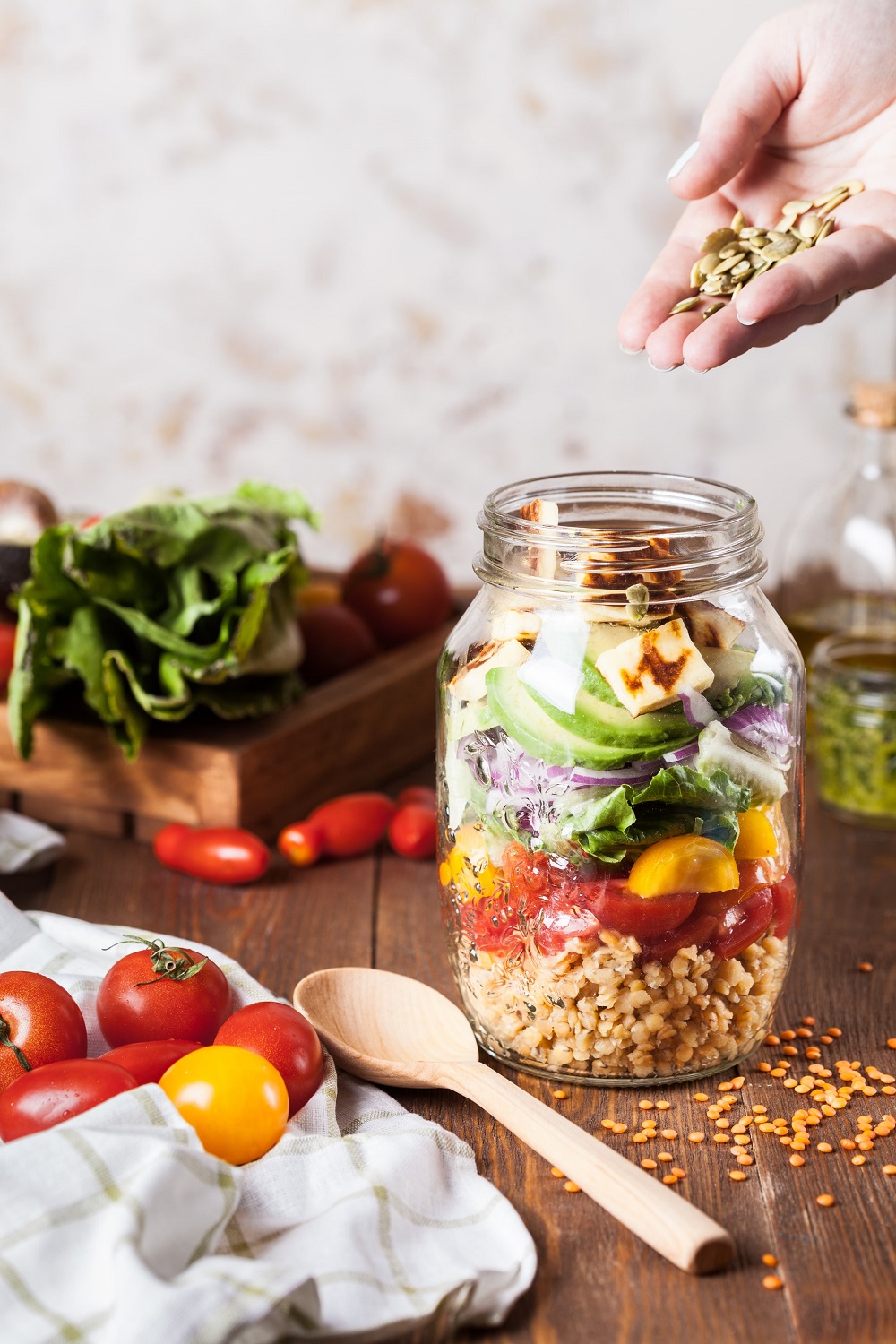
It’s important to eat a healthy, whole foods diet for health, wellness, and weight loss and management, but when you’re low on funds, it isn’t always easy to afford the best foods.
These 30 Easy Ways to Eat Healthy on a Budget will teach you the best strategies to help you afford delicious, healthy foods even when you’re broke!
For more budget-friendly tips, check out the following:
14 Incredible Overnight Oats Perfect for Busy Mornings
16 Best Probiotic Superfoods (Plus Recipes!) for Gut Health
20 Easy Ways to Score the Best Deals at Aldi
30 Best Weight Loss Foods You Need to Keep in Your Kitchen
Pin for Later:
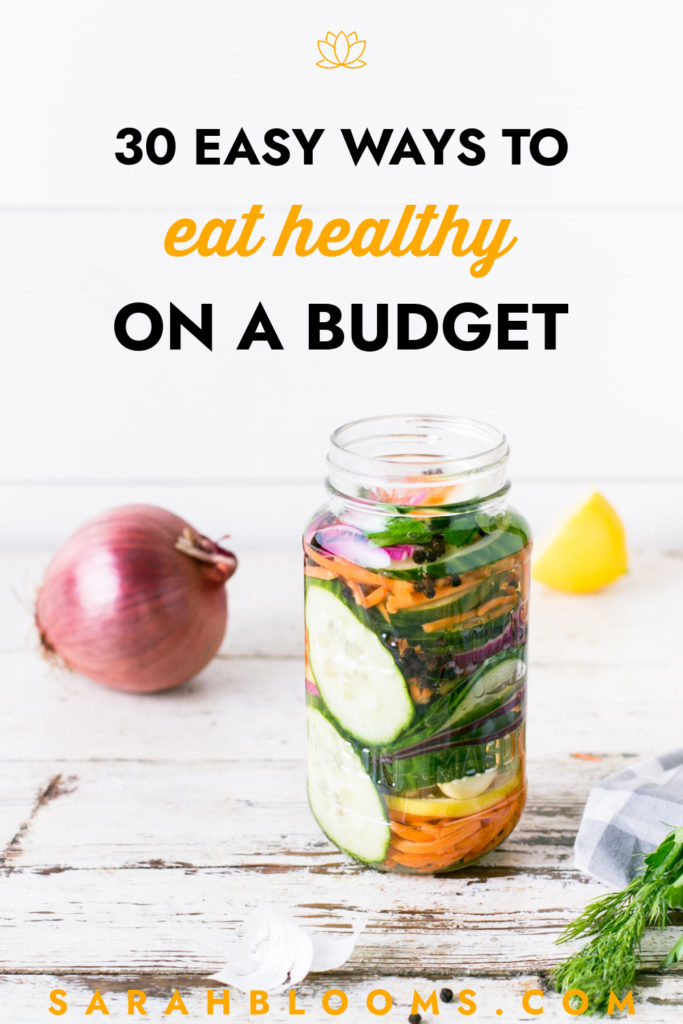
How to Eat Healthy on a Budget without Feeling Deprived
1. Cook at home.
The easiest way to save money on food – and eat healthier – is to prepare your food at home. This means eating in for breakfast and dinner, packing your lunch for work, and taking snacks with you when you’ll be out all day.
Eating out can get seriously expensive and certainly adds up if you do it regularly. Plus, if you make your own food, you can control what you’re eating, so you know it’s as healthy as possible.

2. Eat whole foods.
To eat healthy on a budget, you need to center your diet around healthy whole foods.
Prepared and processed foods are typically more expensive, less nutritious, and can contain preservatives and other ingredients that can make you sick over time (think autoimmune diseases, cancer, diabetes, heart disease, and more)!
To fill up on minimal food, make sure you eat from every group – protein, carbs, and fats – at most meals. The ratio depends on what works for you and makes you feel healthy and satisfied.
Even experts can’t agree on an exact number of macronutrients. Some say high proteins diets are necessary for optimal health, and others claim protein can cause cancer.
Now, we have the ketogenic diet, a high fat, moderate protein, low carb diet, which followers say promotes health and weight loss.
Plant-Based Proteins – Cheap and healthy proteins include tofu, whole grains, beans and other legumes, nuts, leafy greens, and other vegetables.
Carbs – Healthy carbs include fruits, vegetables, and whole grains like whole grain pasta and bread, brown rice, oats, wheat berries, and quinoa.
Fats – Healthy fats include coconut oil, avocado oil, olive oil, avocados, flax seeds, nuts, and more.
Whatever fats you consume, please don’t eat margarine!
You may think margarine is good for you, since the healthcare community and marketing has spread that myth for years, but margarine is actually incredibly bad for you.
First of all, margarine is not a natural product at all.
It was created in a lab by a chemist, is naturally white and dyed yellow to look like butter, and is made up entirely of trans fats, which are the real cause of clogged arteries – not butter.
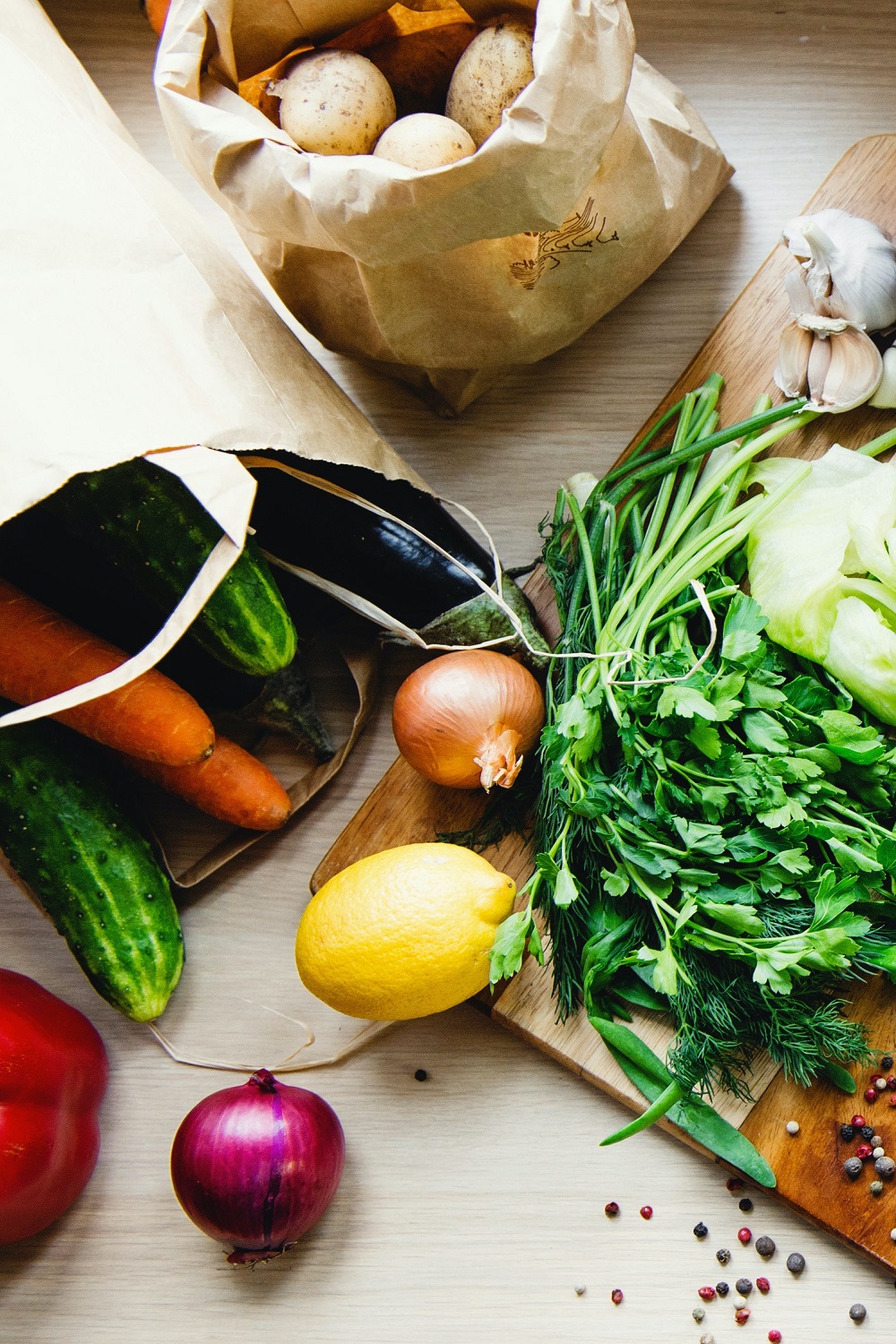
3. Eat less.
Our culture in the U.S. seems to be obsessed with making everything bigger and better – and this mindset has had some serious impacts on our health.
When you consider that more than 30% of adults in the U.S. are obese, those supersized meals and giant soft drinks look even less appealing.
Even if you don’t regularly consume unhealthy foods, including fast foods, keeping your portion sizes small is great for your wallet and your waistline.
4. Buy from local farms.
Buy from local farms by frequenting Farmer’s Markets and food stands during the growing season. You’ll save money by buying directly from the farmers and cutting out the middle man.
Plus, you get to support local farms and agriculture instead of big chain supermarkets.
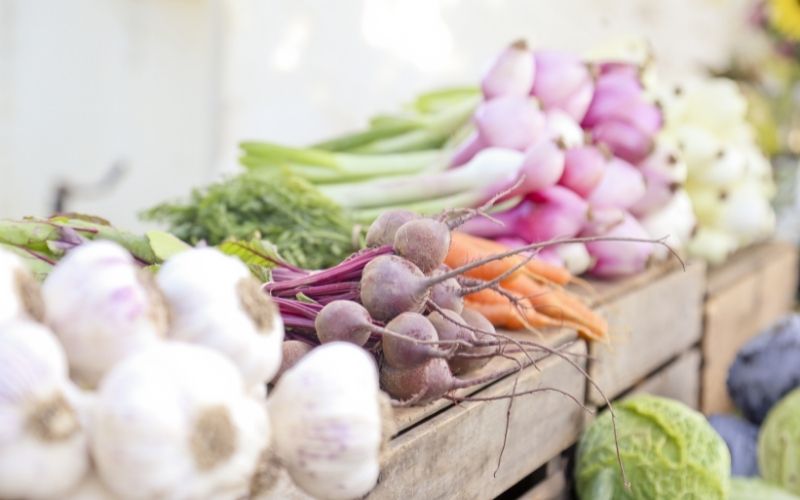
5. Check out Thrive Market.
Speaking of cutting out the middle man, check out my favorite online store, Thrive Market.
They sell all the top organic, non-GMO, and healthy products at wholesale prices (25-50% off!), and they ship right to your door – no more dealing with crowds and premium supermarket prices!
Thrive Market can do this because they cut out the middleman and work directly with brands to pass on significant savings to their members.
Members get everyday wholesale pricing and free shipping on all orders over $49 for just $60/year membership fee.
I made back my membership in savings within my first two orders, and this is a typical experience for members.
Plus, there’s a membership guarantee.
Thrive Market guarantees your membership will pay for itself within a year, or you get the difference back in Thrive Market credit when you renew!
Thrive Market also gives back to those who need it – for every paid membership, Thrive Market donates a membership to a low-income family, veteran, or teacher.
I’m happy to support a company that cares about providing healthy, affordable foods and giving back to the community.
Shop Thrive Market’s incredible catalog of products, and see how much you can save on everything from Paleo-friendly and gluten-free foods to eco-friendly home goods.
Plus, as a new customer, you can enjoy a free gift, free shipping over $25, and an extra 20% off your first order!
So what are you waiting for?
Try Risk-Free for 30 Days
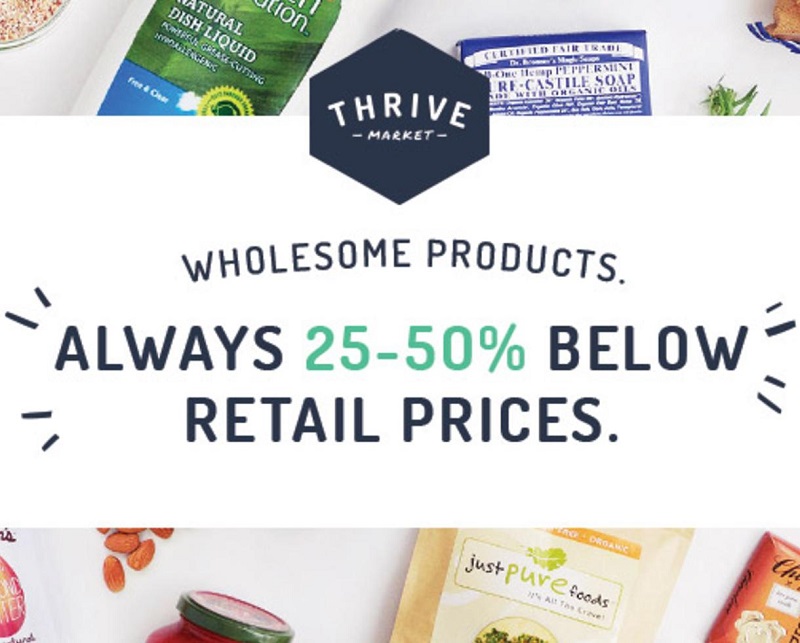
6. Plan meals and snacks.
Take some time on the weekend to plan out what you want to eat for the week.
Meal planning can reduce your grocery bill drastically because you only buy what’s on your plan, which reduces impulse buying and other unnecessary spending.
If you plan out your week correctly, you should only have to make one shopping trip every week or two, and you can plan your meals around sales to further reduce food costs.
Plus, having a list of go-to meals you know your family enjoys can cut the stress and time spent on food prep.
Plan and prep your snacks for the week, too, to prevent getting too hungry between meals, which can lead to overeating.
PRO TIP: Want to save even more time and effort through the week? Prep all your meals on the weekend, so you only have to heat and eat – so much easier!
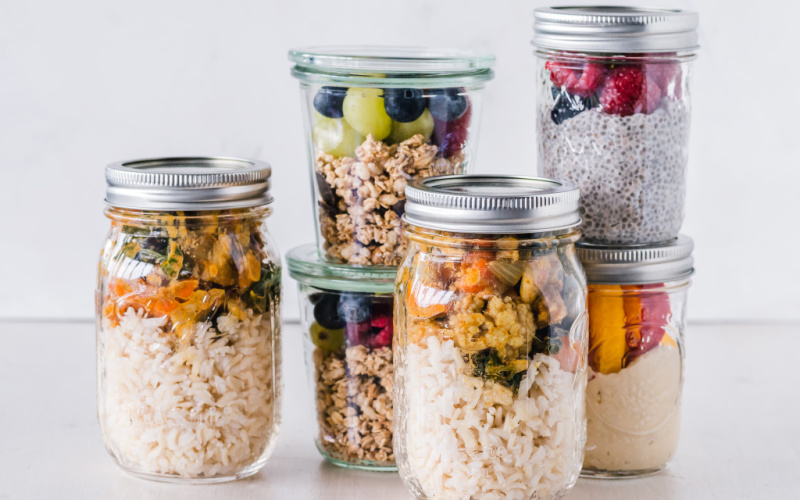
7. Make large batches.
When you find a meal your family enjoys, make a big batch – double or even triple the recipe.
Then, reheat and eat that dish for lunch and dinner through the week, or freeze individual portions for quick and easy dinners on busy weeknights.
8. Use food scraps.
Save veggie scraps in the freezer to make vegetable broths you can use in soups and other recipes, or just drink broth on its own for a wonderful health boost!
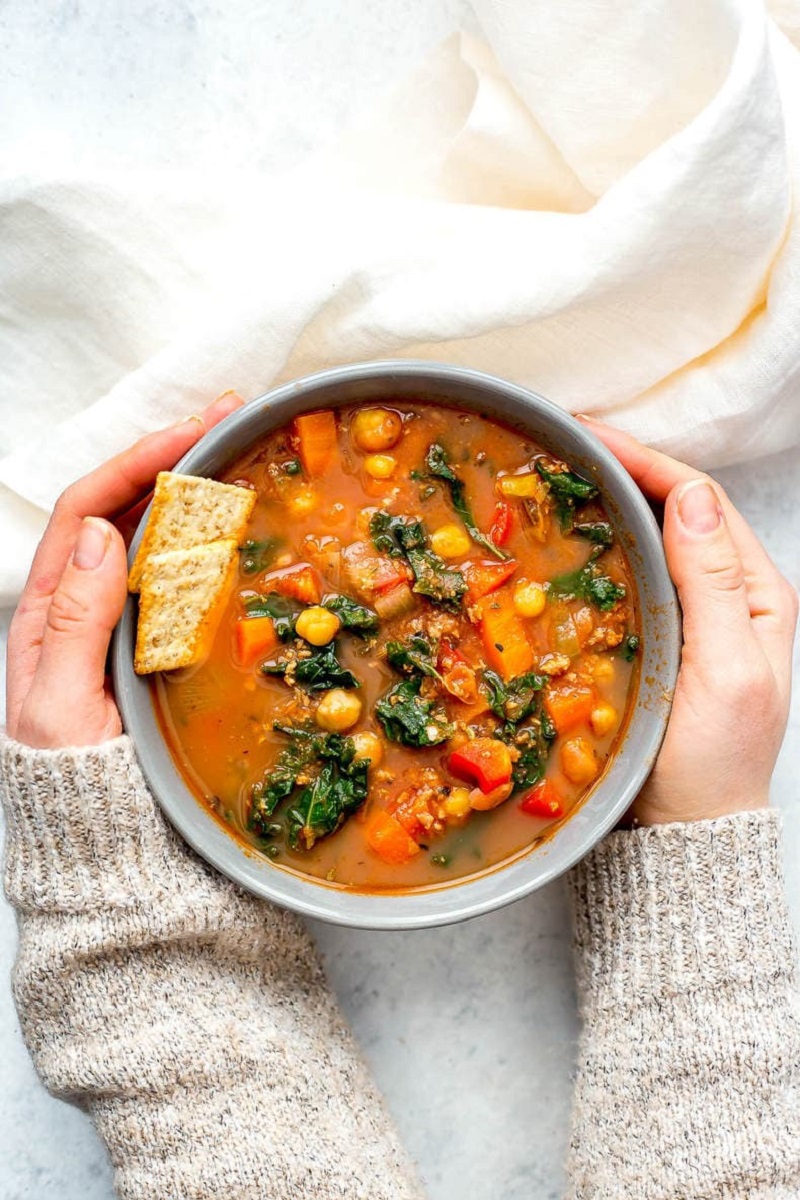
9. Buy frozen produce.
Many people avoid buying frozen produce because they think it isn’t as healthy as fresh, but that’s not really true.
Since frozen vegetables are picked and quickly flash-frozen, they are actually often more nutritious than fresh produce, which is typically picked too early to ensure it doesn’t over-ripen too quickly and loses nutrients during shipping and storage before it makes its way to your table.
10. Eat less meat.
Meat tends to be more expensive than plant-based options, so if you don’t eat a plant-based diet all the time, try to consume meatless meals at least once per week, or more if you can.
Some easy and delicious plant-based recipes to help you get started:
35 Healthy and Delicious Vegan Power Bowls You Will Crave
40 Best Veggie Burger Recipes Even Meat Eaters Will Love
50 Best Healthy 30-Minute Vegan Meals Perfect for Busy Weeknights
100 Healthy Vegan Chickpea Recipes You Will Love – Even Desserts!

11. Drink tap water.
Drink tap water instead of bottled to potentially save thousands of dollars per year! Don’t like the taste of your tap water?
Get a water filter faucet mount or pitcher. Sure, you have to spend money to buy filters, but they cost far less than buying bottled water all the time.
Filters are better for the environment, too, because you won’t be sending tons of bottles to the landfill or recycling center (recycling costs money and uses energy and natural resources, too).
To save even more money, you may want to stop buying drinks altogether!
Juices and soda are not only high in sugar and empty calories, they’re also pretty expensive, especially when you buy them regularly over time.
Learn how to make your own healthy and inexpensive probiotic drinks to improve your gut health and immune system here.
Worried you aren’t drinking enough water? Check out 20 Easy Ways to Drink More Water Every Day.
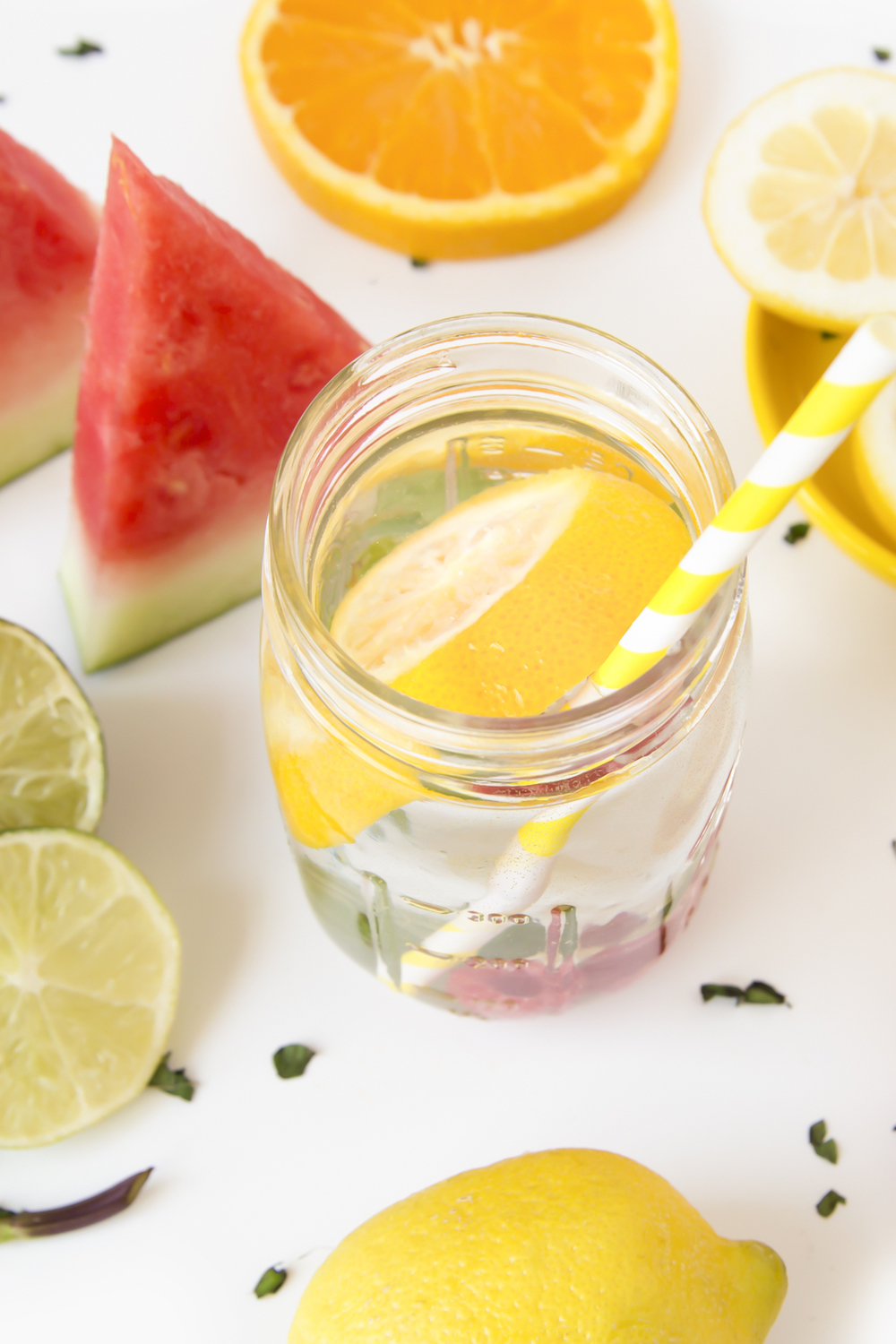
12. Buy store brands.
Store brand foods have improved tremendously over the past few years.
In response to consumer demand, many store brands even offer healthier fare, including organic, plant based, and gluten-free options, at significant savings to help you eat healthy and keep more money in your wallet.
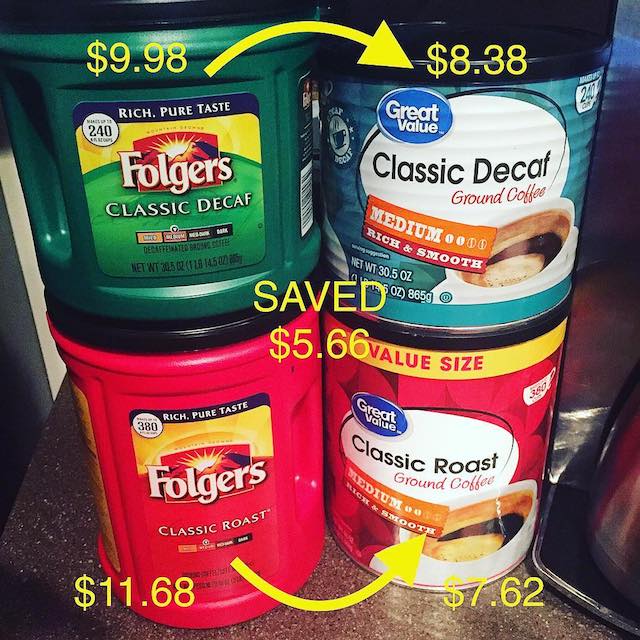
13. Reduce or eliminate supplements.
Depending on the amount and quality of supplements you take, the cost of these pills can really add up!
Plus, if you’re eating a healthy diet and getting plenty of sunshine (for Vitamin D), you’re probably getting adequate amounts of most nutrients.
If you are worried you’re not getting all the nutrients you need from your diet, or you have absorption issues, consider taking a high-quality multivitamin like Ritual daily vitamins for women.
They taste like peppermint and contain the top 9 nutrients women lack the most – Omega-3’s, iron, Vitamins D3, K2, B12, and E, boron, magnesium, and folate – all in one easy-to-swallow caplet.
You will save money over buying a lot of different vitamins, and Ritual vitamins are vegan and contain no artificial flavors or synthetic fillers.
They now offer plant-based protein powder and vitamins for the whole family. In addition to the women’s multivitamin and over 50 multivitamin, they also have formulas for pregnancy, men, teens, and kids, plus money-saving bundles!
Click here to learn more about Ritual.
Pay attention to your body – if you’re feeling tired or otherwise unwell, have your doctor check your vitamin and mineral levels to ensure you stay as healthy as possible.

14. Eat seasonally.
In season fruits and vegetables not only taste better, they also tend to be cheaper than out-of-season produce. If you’ve ever tried to buy a watermelon in the wintertime, you know exactly what I mean.
Farmer’s Markets, which typically offer a cost savings over regular grocery stores, usually only carry in season produce, since you’re buying directly from farmers in your area.
Find easy and delicious summer recipes:
15 Fruity Vegan Smoothie Bowls for a Healthy Start to Your Day
12 Fresh and Fruity Summer Salads for Quick and Easy Meals
Check out hearty meals for fall and winter:
25 Cheap Instant Pot Meals Under $10
25 Amazing Butternut Squash Recipes You Need to Try – Even Dessert!
30 Best Clean Eating Soup Recipes for Better Immunity
100 Healthy Vegan Chickpea Recipes You Will Love – Even Dessert!
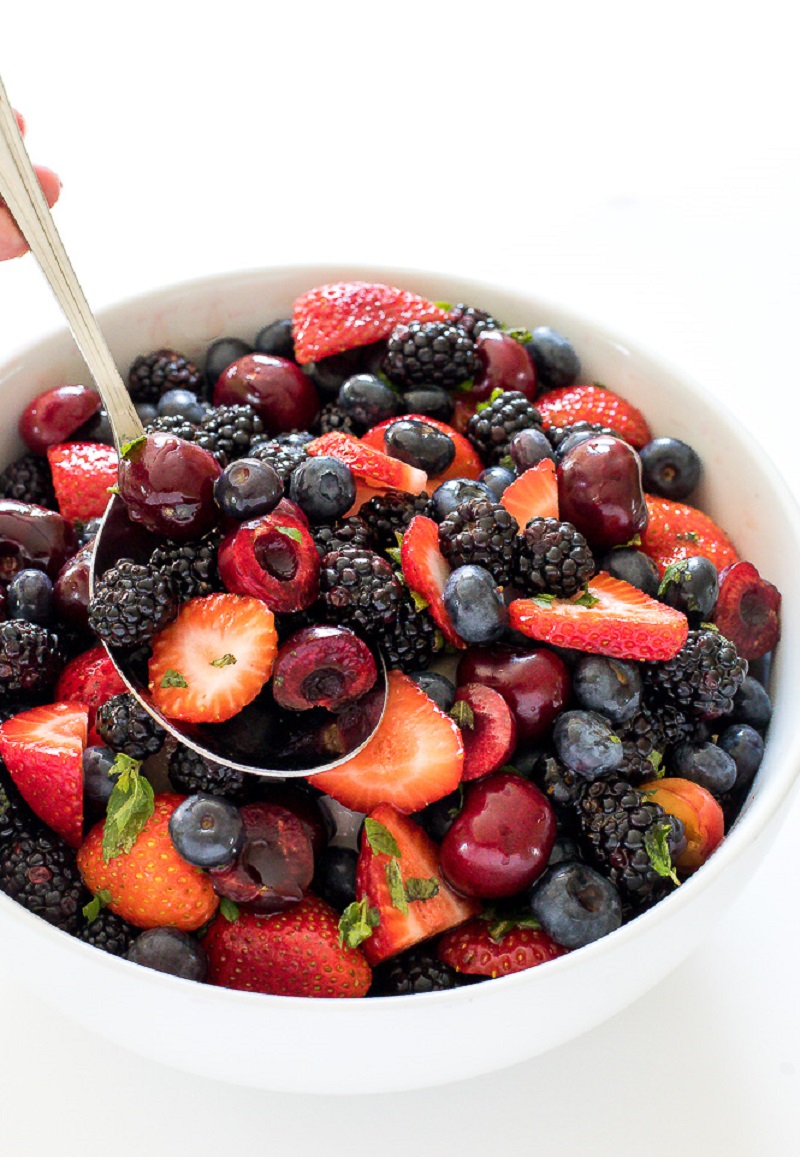
15. Eat filling foods.
Buy calorie dense foods like potatoes, brown rice, whole grain pasta, oats, and protein rich foods like tofu for cheap and easy ways to fill up without spending a lot of money.
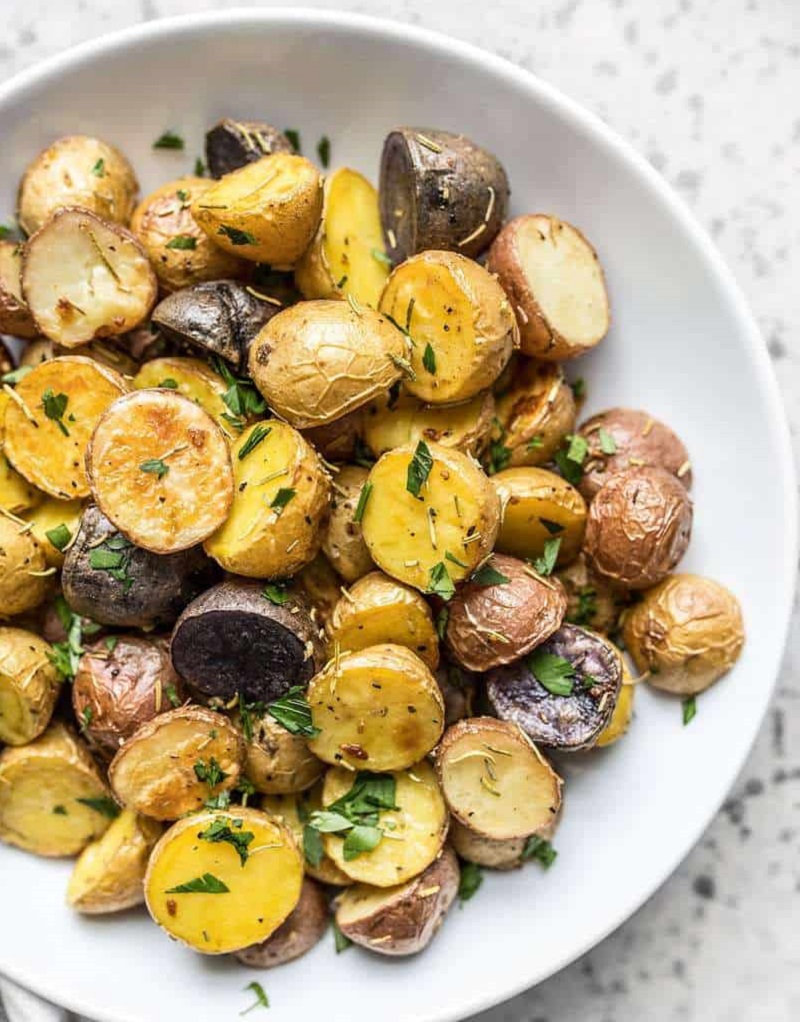
16. Stock up on sale items.
Stock up on products you already buy when they go on sale.
Just make sure to keep track of the regular price, so you know the sale price is a good deal, and check online prices regularly to make sure you can’t get it cheaper elsewhere.
Also, don’t buy things you don’t really need just because it’s on sale.
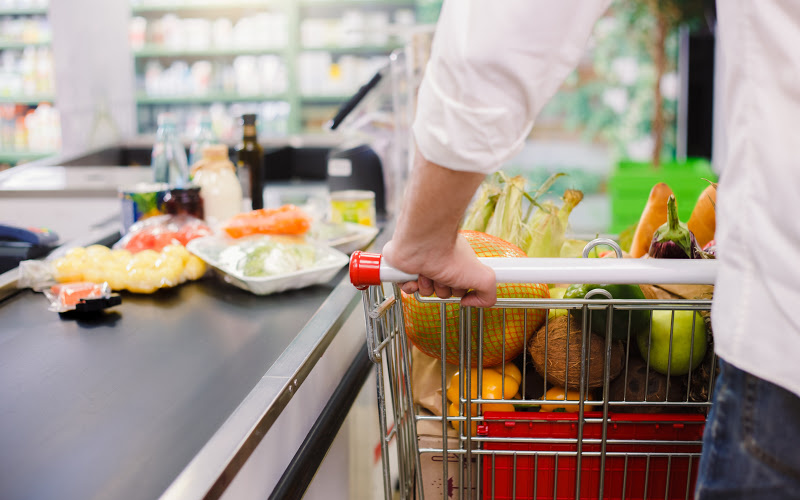
17. Buy in bulk.
Buying in bulk can be a real money saver.
You can buy enough food (and other household necessities) to last you for months all in one trip, which may cost more up front, but will save you loads of money in the long run.
Separate perishable foods you can’t eat right away into single portions, and freeze to enjoy later.

18. Check unit prices.
Buying in bulk is usually more economical, but it’s still a good idea to check unit prices on grocery store labels to make sure you’re buying the cheapest size.
19. Invest in a Foodsaver.
You’ll lose money buying in bulk if you don’t store your food properly.
Keep perishable foods like meats and vegetables fresher longer with a FoodSaver vacuum sealer.
Vacuum seal burgers, chicken breasts, fish, corn on the cob, asparagus, green beans – anything that can be frozen – to prevent freezer burn and keep foods fresh up to 5 times longer than typical storage methods.
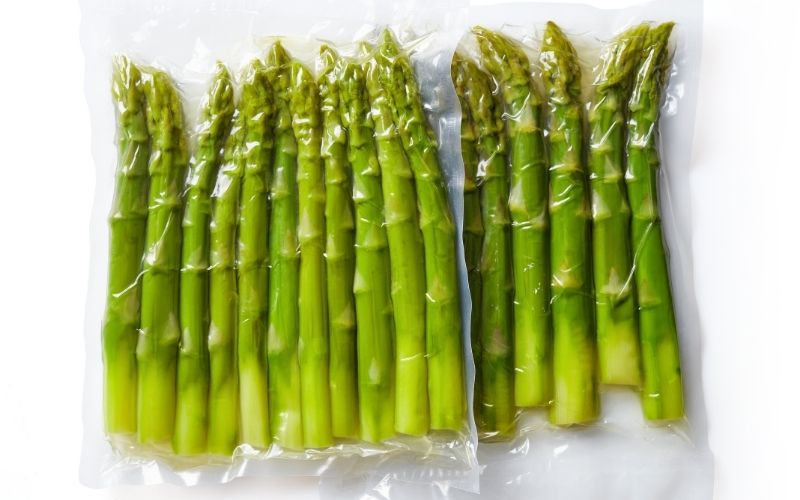
20. Join store loyalty pograms.
Join grocery store loyalty programs to take advantage of discounts and coupons for members.
21. Use coupons.
Cut coupons from the Sunday newspaper and other sale flyers, print coupons from Coupons.com, or use a money saving app like Ebates, Ibotta, SavingStar, Coupons.com, RetailMeNot, Walmart Savings Catcher, Groupon, SnipSnap, Checkout 51, and more.
You don’t need to sign up for all these apps. I use Ibotta, and you wouldn’t believe the savings with just one coupon app!

22. Share a membership.
Want to shop at a bulk store like Costco or Sam’s Club, but don’t want to pay for a full membership yourself? Get a group of friends to go in on a membership with you. Then, go shopping together to buy in bulk for everyone.
23. Avoid impulse buys.
To avoid overspending, make a grocery list, and stick to it.
Also, never shop on an empty stomach, which can cause you to buy more food than you need and may make you choose unhealthy foods, since your body will be screaming to be fed.
If you still struggle to control your spending – or just really dislike grocery shopping – try a grocery delivery service like Thrive Market (see above) or Hungryroot.
Hungryroot is like a grocery delivery and meal planning service in one! Just answer a few questions about your lifestyle and grocery needs, and they will send you groceries and quick, chef-crafted recipes ready in 10 minutes or less!
You will save money by avoiding impulse buys at the grocery store and may even find it easier to stick to a healthy whole foods diet.
Take the quiz to create your grocery plan with Hungryroot.
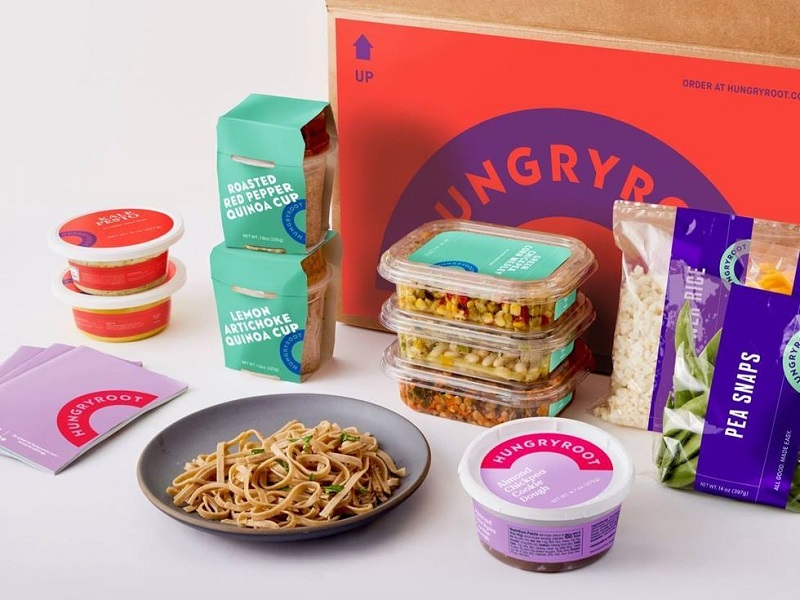
24. Shop at Trader Joe’s.
If you have a Trader Joe’s store in your area, consider shopping there regularly for healthy organic items at great prices.
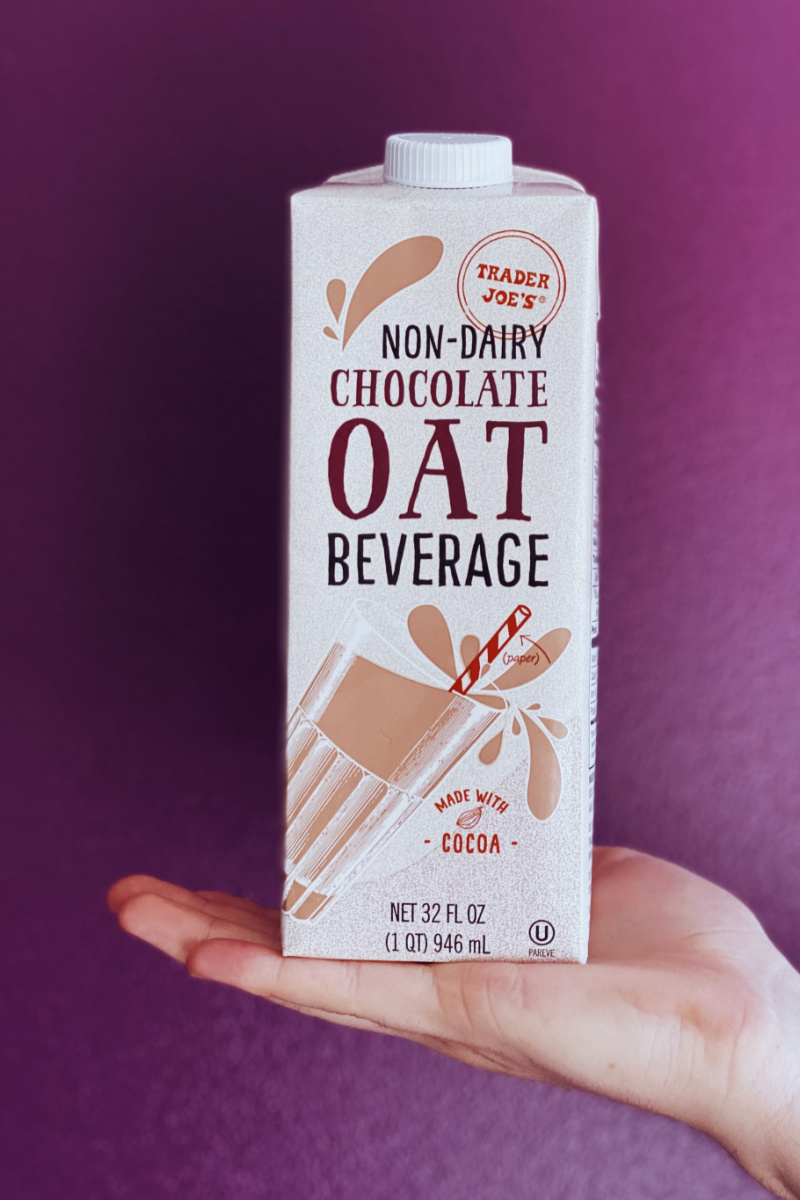
25. Try Aldi, too.
Aldi doesn’t carry many name brands, but they have good quality food, including organic, vegan, vegetarian, and gluten-free options, for the lowest prices you’ll find anywhere.
Just make sure you have a quarter to use the cart, and bring your own bags or boxes to carry your groceries.
Find my favorite Aldi shopping tips here: 20 Easy Ways to Score the Best Deals at Aldi.
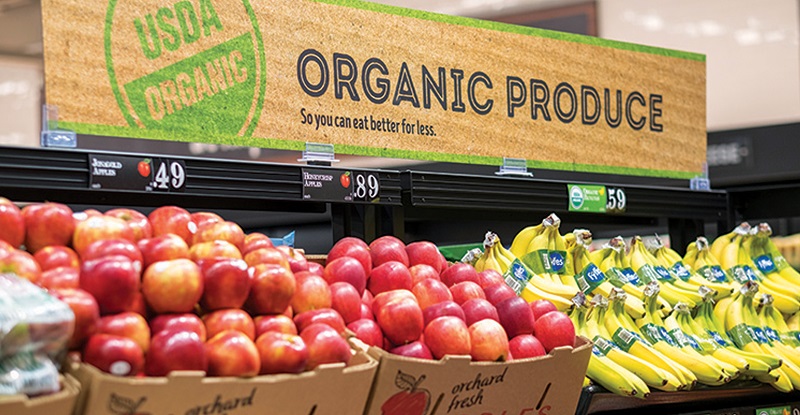
26. Don’t shop around too much.
It can pay to shop around to get the best price, but it can also backfire on you. Ask yourself if the trip is worth your time, gas money, and vehicle wear and tear.
If you’re traveling all over town and shopping at multiple stores to get the best deals, it may not really be worth it in the long run.
27. Grow your own food.
Grow your own food in your backyard or indoors to offset food costs.
Growing produce from seed is the most economical way to grow your own food.
I buy my seeds from SeedsNOW.com, an online seed company that offers high quality and affordable (they’re actually super cheap!) non-GMO, organic, heirloom seeds.
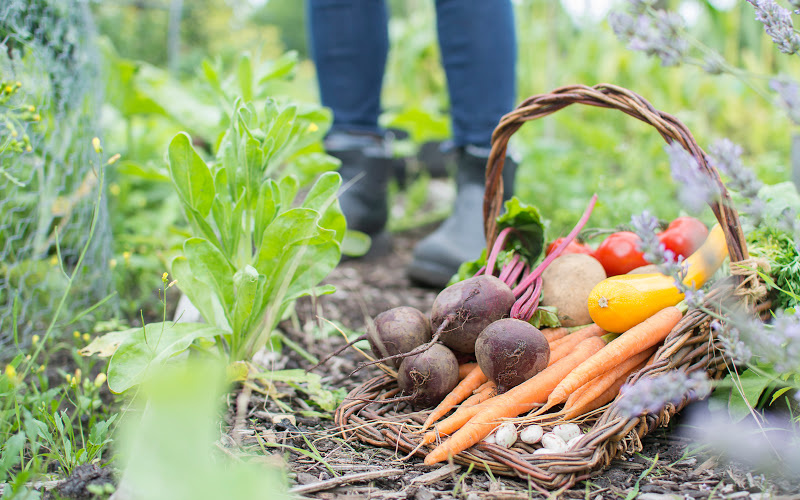
28. Learn how to preserve foods.
Buy fresh produce in bulk when it’s in season to enjoy great tasting fruits and veggies all year round and save loads of money in the process!
Learn how to can, freeze, and ferment produce properly, so you can safely preserve all that fresh produce you’ve bought or grown.
PRO TIP: When prepared properly, fermented foods are your best friend!
Not only does this method preserve foods, it also provides healthy probiotics to help improve gut health and immunity and potentially boost weight loss!
However, since it’s super difficult to find most unpasteurized fermented foods in grocery stores (they are sometimes available in health food stores), you usually have to make your own to get the probiotics and health benefits.
Learn how to make your own fermented foods at home:
10 Delicious Gut Healing Probiotic Drinks You Can Make At Home
16 Best Probiotic Superfoods (Plus Recipes!) for Gut Health
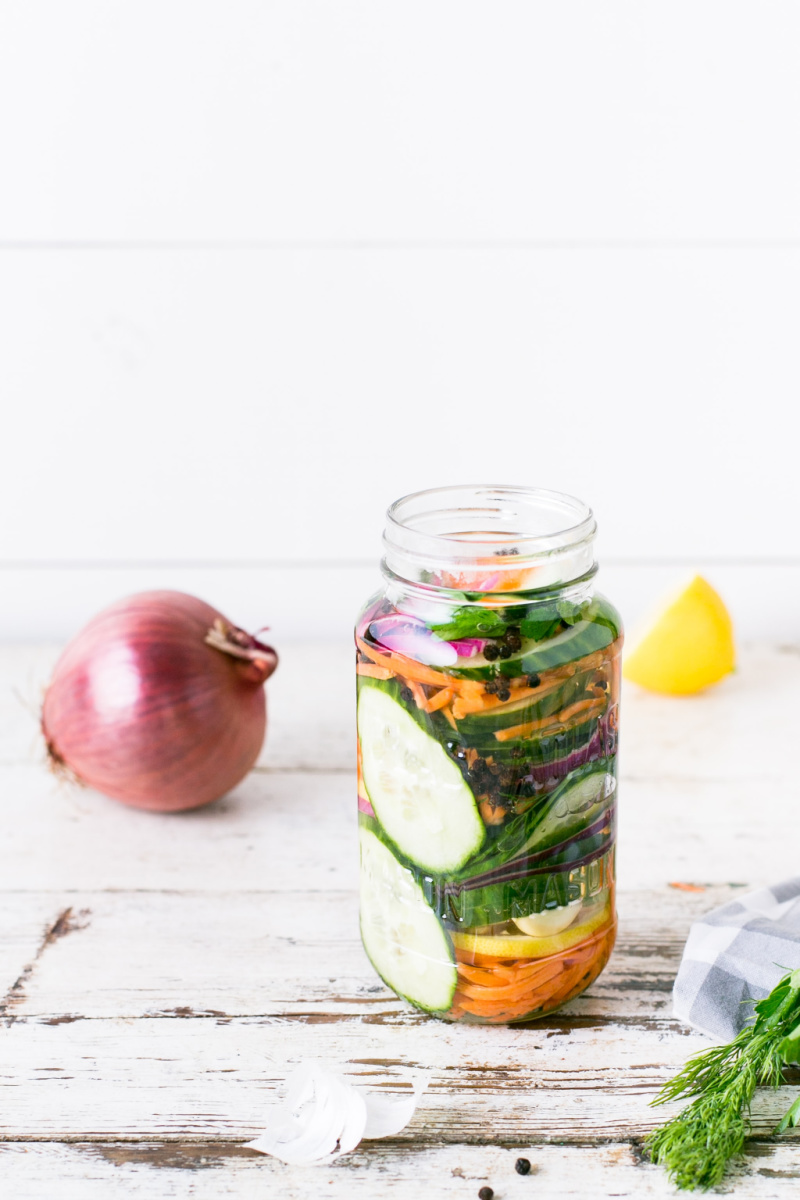
29. Buy “ugly” food.
Almost half of the food grown in this country is thrown out because it can’t be sold. That’s where Misfits Market comes in.
With Misfits Market, you can fight food waste with organic produce and sustainably sourced groceries delivered to your door at up to 40% off grocery store prices!
Sign up for a FREE membership and save an average of $21.49 every week.
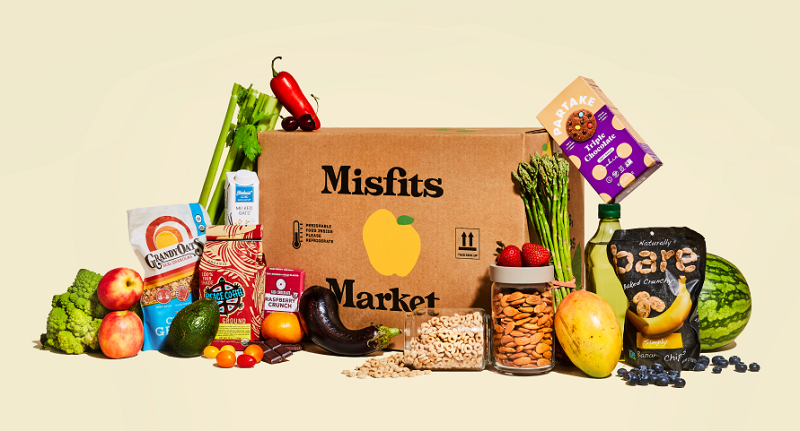
30. Only buy what you will use.
Food waste is a serious problem worldwide, but people in industrialized nations are perhaps the worst offenders.
In developing countries, food is usually wasted due to lack of refrigeration and fast transportation resources, but in wealthier nations like the U.S., consumers are the ones wasting the most food.
According to the F.A.O., consumers in industrialized nations, especially the U.S. and Canada, throw out about 40% of the food they buy each year! According to the USDA, the United States alone wastes more than $160 billion in food per year!
For the purposes of this post, we won’t delve into the debilitating impacts food waste has on health and quality of life worldwide, but wasting food can also have serious effects on your budget, especially when you’re trying to save money.
Eating healthy isn’t always easy when you’re on a budget, but these 30 Ways to Eat Healthy on a Budget will help you eat a filling, healthy, and satisfying diet even when you’re broke.
What do you think of these Genius Ways to Eat Healthy on a Budget? Please share your thoughts in the comments below, and feel free to share some of your own favorite tips!
Related Posts:
14 Incredible Overnight Oats Perfect for Busy Mornings
16 Best Probiotic Superfoods (Plus Recipes!) for Gut Health
20 Easy Ways to Score the Best Deals at Aldi
30 Best Weight Loss Foods You Need to Keep in Your Kitchen
Pin for Later:
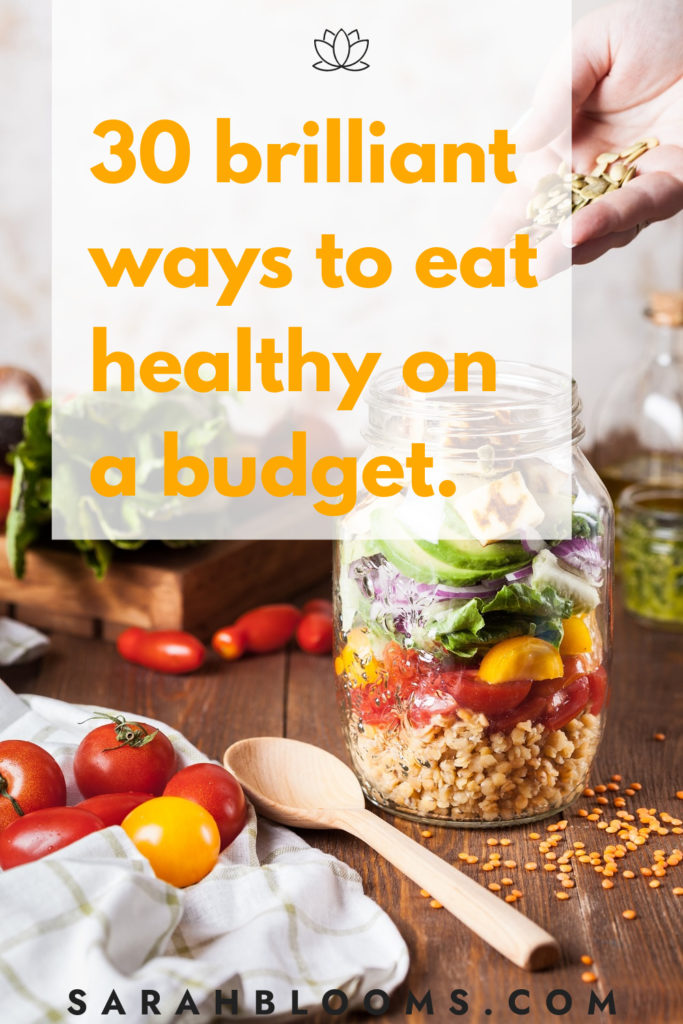
SaveSave
July 13, 2021
by
Sarah
Join the Community
Subscribe now.
Want insider tips, latest trends, special offers, and a dash of magic ✨ in your inbox?
Copyright 2017-2025 • Sarah Blooms • Design By Piperlane
Copyright 2017-2025 • sarah Blooms
Design By Piperlane • Privacy Policy
View the Comments
Add a Comment
Comments will load here